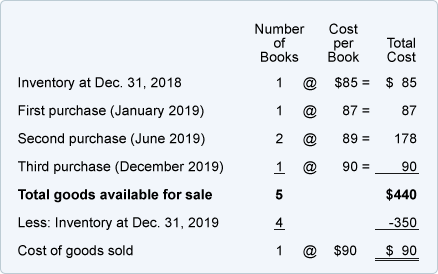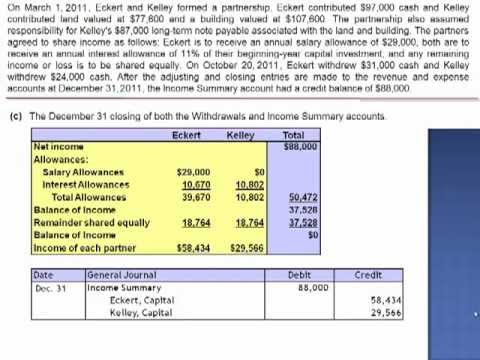Content

Accounting standards provide guidelines for when a company should record an asset or liability at fair value or at historical cost. Fair-value accounting usually applies to financial assets, including securities, derivatives and hedges, and employee stock options. Fair value measurement implies regular revaluations so that the book value of the assets generally reflects the market value at the time of the revaluation as assessed by the company and reviewed by auditors. Debt investments and equity investments recorded using the cost method are classified as trading securities, available‐for‐sale securities, or, in the case of debt investments, held‐to‐maturity securities. The classification is based on the intent of the company as to the length of time it will hold each investment.
- Residual income valuation models consider all the cash flows that accrue to the firm post the payment to suppliers and other outside parties.
- This does not mean simply assuming that the value of an asset recorded in the accounts represents its market value.
- However, the balance sheet assets will only measure costs that the company capitalises, meaning those costs that the accounts recognise as an investment, as opposed to an expense.
- The net asset value – also known as net tangible assets – is the book value of tangible assets on the balance sheet less intangible assets and liabilities – or the money that would be left over if the company was liquidated.
- Company ABC has determined that they have an obsolete inventory worth $3,000 but has identified that it can be sold for $700.
- You define which account assignment object is to be charged through the account assignment category such as (sales order, cost center, etc.,) Which accounts are to be charged.
The effect is that the market value is always above the book value. In the long term, competition will drive the return on a new investment to its cost of capital. Economists refer to such an investment as a zero economic profit investment or a zero net present value investment. New assets in competitive markets earn a return, but only equal to the return available to other investments of similar risk. Thus, in a fully competitive market, the market value of a new asset equals its cost.
Figure 4: Guide for selection and implementation of AAV approach
Other assets, such as real estate, are valued simply by the price paid. Typically, fixed assets are valued at the historical price while marketable securities are valued at the current market price. The valuation account in accounting refers to balance sheet accounts that are also paired with another balance sheet account in order for the company to be able to come up with the carrying value of their assets or liabilities. A valuation account is paired with an asset account or liability account, and offsets the value of the assets or liabilities in the paired account. The result of this account pairing is a net balance, which is the carrying amount of the underlying asset or liability. The valuation account concept is useful for estimating any possible reductions in the values of assets or liabilities prior to a more definitive transaction that firmly establishes a reduction.
A debt investment classified as held‐to‐maturity means the business has the intent and ability to hold the bond until it matures. The balance sheet classification of these investments as short‐term or long‐term is based on their maturity dates. The best approach may be to use accounting-based measures of asset value. This does not mean simply assuming that the value of an asset recorded in the accounts represents its market value.
Business Development
For example, the search algorithm developed by Google is certainly worth more than the cost of the effort to create it. In such cases, historical costs recorded in the accounts, whether capitalised or not, do not offer a fair reflection of the true market value. In contrast, the cost of a short-term licence acquired through a competitive auction is more likely to be reflective of the market value of the licence. As for other assets, companies might be required to perform revaluations and record a write-down when the market value falls below the book value.

Debt and equity investments classified as trading securities are those which were bought for the purpose of selling them within a short time of their purchase. These investments are considered short‐term assets and are revalued at each balance sheet date to their current fair market value. Any gains or losses due to changes in fair market value during the period are reported as gains or losses on the income statement because, by definition, a trading security will be sold in the near future at its market value. In recording the gains and losses on trading securities, a valuation account is used to hold the adjustment for the gains and losses so when each investment is sold, the actual gain or loss can be determined.
Business Valuation
The information featured in this article is based on our best estimates of pricing, package details, contract stipulations, and service available at the time of writing. Pricing will vary based on various factors, including, but not limited to, the customer’s location, package chosen, added features and equipment, the purchaser’s credit score, etc. For the most accurate information, please ask your customer service representative. Clarify all fees and contract details before signing a contract or finalizing your purchase. Each individual’s unique needs should be considered when deciding on chosen products.
- Clarify all fees and contract details before signing a contract or finalizing your purchase.
- We provide a wide array of financial products and technical assistance, and we help countries share and apply innovative knowledge and solutions to the challenges they face.
- If you require help with the My Account registration process or have any general enquiries about your M&G investments you can contact us.
- Submit the email address you would like us to use when we contact you.
- An exception to this would be if the tariffs allow ex post adjustments to compensate for such movements in following regulatory periods.
- Bad debts are recognized only after the company is certain the debt will not be paid.
Allowance for Doubtful Accounts is combined with the debit balance of Accounts Receivable to get the carrying amount of your company’s receivables. The Allowance for Doubtful Accounts is an example of a valuation account related to an asset (the company’s receivables). The cash account of Aguilar Co. showed a ledger balance of $3,969.85 on June 30, 2017.
Prepare journal entry to record the change in deferred tax assets or deferred tax liabilities in relation to rent received in advance for the financial year ended December 31, 2011. If the AFS investment has a temporary decline in fair value, then the company would record an unrealized loss to other comprehensive income (“OCI”) on the balance sheet. The offset would be a credit to reduce the carrying value of the investment on the balance sheet. This reduction to the investment is sometimes referred to as a valuation allowance. These costs will be included on the balance sheet to the extent that they are capitalised, which means they are treated as investments recorded as an asset on the balance sheet.
What is a revenue valuation account used for?
In the accounting system, the valuation account is used in the pairing of two different balance sheet accounts for measuring or reporting the carrying value or carrying amount of assets or liabilities of a company.

دیدگاه خود را به اشتراک بگذارید